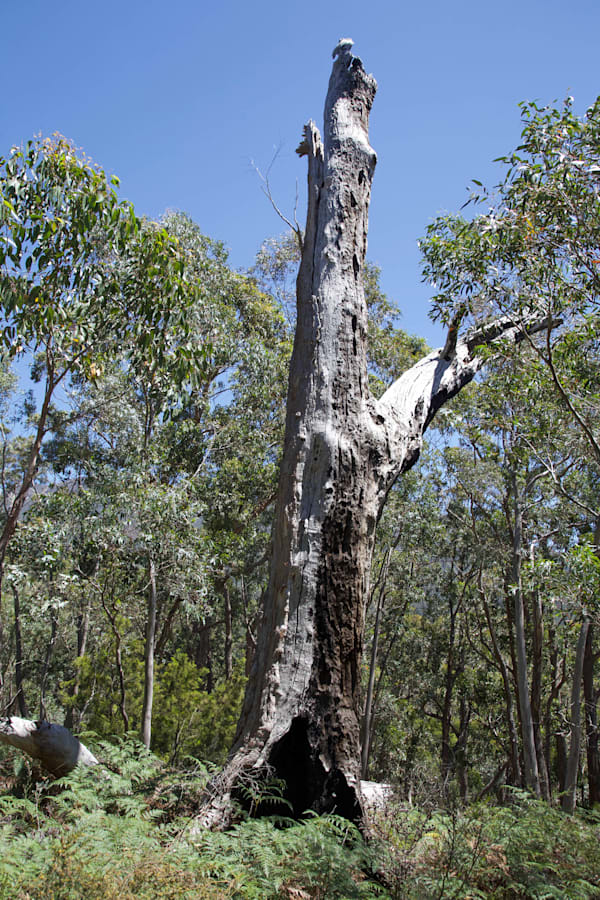“The cloud was rising from a mountain – at such a distance we couldn't tell which. I can best describe its shape by likening it to a pine tree. It rose into the sky on a very long "trunk" from which spread some "branches." ... Some of the cloud was white, in other parts there were dark patches of dirt and ash. The sight of it made the scientist in my uncle determined to see it from closer at hand.” ~ Pliny the Younger
So wrote Roman author, Pliny the Younger. The event he evokes is the eruption of Mount Vesuvius in August 79 AD. His uncle, Pliny the Elder, died that day while seeking his closer scientific view, one of an estimated 16,000 victims of the volcano.
When large plumes of smoke erupt from the mountain behind The Patch, Pliny’s description seems eerily apt. It’s not because our mountain is a volcano: it’s not, and never has been. But when our sky takes on the uncanny, jaundiced hue caused by bushfire smoke, history gives us good reason to be concerned. On Black Tuesday, February 7, 1967, a catastrophic fire engulfed Hobart and surrounds. The bald statistics of that day are horrific: 64 people lost their lives, nearly 1,000 were injured, and about 1,300 houses and other buildings were destroyed. But to bring the horror home, 10 people in our suburb died. Our local landmark, the Cascade Brewery, was gutted, and 163 South Hobart homes were lost.
The Patch, like much of the woodland on the flanks of kunanyi, has recovered well over the years. But everywhere there are reminders. Some, like blackened stumps, are obvious. Others, like the distribution of plants and weeds, less so.
Of course 1967’s was not the first fire to devastate this area. Once, while excavating for an outdoor seating area, we exposed about a metre of the local soil profile. Some 20cm from the top there was a wide layer of black: charcoal and ash from a large fire. Knowing the rough rate of soil development here, I have little doubt that this was from a pre-European bushfire.
And that’s the sobering thing about living with, in, or near the Australian bush. Much of it burns regularly, and is designed to do so. Professor Tom Griffiths, in his book Forests of Ash, writes of mountain ash/swamp gum (Eucalyptus regnans), that they “have made a Faustian bargain with fire”. They actually need massive, catastrophic fires in order to regenerate. Historically such fires occur only every few hundred years in stands of E.regnans. While that species isn’t present in The Patch, E. globulus (blue gum) and E. obliqua (stringybark) are. And they appear to have made a not-dissimilar pact with fire, albeit with a shorter time-frame.

On an extremely hot day, towards the end of summer, I’m walking among some of those trees. The very air scintillates, filled with the tang of eucalyptus oil. Dried leaves fall from on high, joining ropes of desiccated bark and piles of kindling-perfect twigs on the ground. The resulting heap lies deep and crisp and uneven: a bastardised Antipodean inversion of what Good King Wenceslas saw.
I close my eyes, imagining that the trees are doing a fire-beckoning death dance, invoking an ignition source. It’s a high stakes move, for if a bushfire crowns (reaches the canopy), even large trees will die. Of course that’s not the end of their story. I look closely at one large victim of the ’67 fire that still stands tall in The Patch, and find a tale of life beyond death. Blackened, broken, bleached and hollowed, the trunk is surrounded by fallen chunks of its former mighty self. But it’s also surrounded by a forest of smaller trees and saplings.
The crowning fire has caused the old tree to release its hard seeds into the still warm ash. The heat and smoke have then opened the small, hidden seeds (eu-calyptus literally means “well-hidden”). In time rain and the newly opened canopy have helped them to germinate, and some of the resulting trees, now a mere half century old, are more than 10 metres tall. One day they may reach the 40 to 50 metre-height of the parent tree.
On the way back from my walk I happen across an echidna, snuffling through the bush. It reminds me that it’s not just trees that accept this bargain. A catastrophic fire on the scale of ’67 is unlikely to spare much of the wildlife that’s caught in its path. Given that some experts reckon such fires can be expected here every 50 years or so – and that it’s 52 years since the last one – I realise that we too have to accept some of this ecosystem bargain if we’re to enjoy living by the bush.
For one thing is certain: our “volcano” is anything but extinct.
Peter Grant lives in the foothills of kunanyi with his wife. He worked with the Tasmania Parks and Wildlife Service for 24 years as manager of interpretation and education. His passion for the natural world led him to write Habitat Garden (ABC Books) and found the Wildcare Tasmania Nature Writing Prize. More of his writing can be seen at naturescribe.com.
Click here to read more from Peter Grant's column, The Patch.







